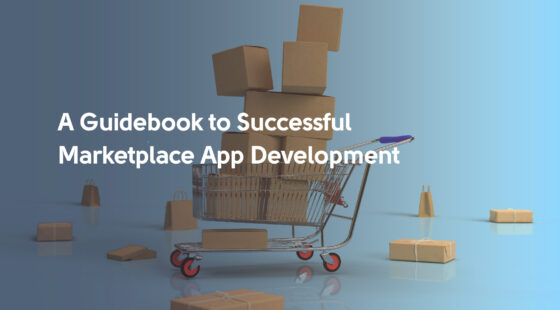Software developers have traditionally been considered as implementers who simply take what others have designed and create it. That paradigm is currently shifting in a fast-paced, results-oriented development environment. Developers aren't just coding anymore; they're contributing to broader product strategy, getting teams to understand what to build and why.
Here at Svitla, even though we don’t officially act as product owners, we still often adopt the mindset of one. It is important to emphasize that this doesn’t have to mean blurring the lines between the two roles. Developers are still distinct from product owners, but we can improve both personally and professionally by adopting aspects of this mindset that serve both our own work and the work of our teams. This can be achieved by better understanding business goals, relating to user needs, and seeing the long-term impact of our technical choices on projects.
We believe that when developers approach projects like product owners, the outcome can be improved communication, more effective features, and products that can succeed in the outside world.
The Evolving Role of Software Developers and Steps to Adopting the Problem-Solving Mindset
Agile methodologies, and specifically Scrum, promote cross-functional teams where developers actively engage with product managers, UX researchers, and designers right from the beginning. It's not just about efficiency; it's so that products are technically possible, affordable, and user-centric.
Take Atlassian's development culture, for example. Developers are included from the very start in brainstorming new ideas, bringing their tech skills to the table. This helps create features that aren't just innovative but are also easy to build and scale.
At Spotify, developers team up with product leads and designers in what they call "squads," sharing the responsibility for user experiences. This setup has pretty much become the standard for rolling out new products.
In these kinds of environments, developers need to look beyond just finishing tasks. They ask questions like: What problem am I solving? How will users react? Will this still work well six months from now? Adopting this mindset and seeing themselves as part of the product's success is where true ownership begins.
1. See the Big Picture
Ownership entails grasping how every task contributes to a larger business and product vision. When developers understand why a feature is important, they can make more informed technical choices, challenge flawed assumptions, and propose alternatives that benefit users more.
For example, if a team is tasked with improving the performance of a dashboard, but the developer does not have insights into usage patterns, they may end up optimizing data queries without context. If the dashboard is primarily accessed during office hours by users on mobile devices with poor Wi-Fi connections, then implementing server-side rendering or minimizing bundle sizes might have a more significant impact on performance.
Therefore, it is essential that usage data, product insights, and customer feedback guide development priorities.
This larger vision is needed not only to code more effectively, but to prevent wasted effort. Teams waste weeks of time polishing features that no one cares about and neglect incremental changes that can radically improve satisfaction.
2. Adopt an Anticipatory Problem-Solving Mindset
Product ownership is not waiting on tickets, it's anticipating problems when they don't yet exist and acting proactively to fix them.
For instance, if a programmer identifies that a new feature results in technical debt, such as hardcoded arguments or redundant logic, they should raise a concern and suggest a more elegant solution, even if the product team hasn't specifically requested it. Similarly, developers will also generally be aware of UX mistakes that won't be reported. Something as seemingly trivial as the number of clicks required to perform an action or the variation in button labeling from one page to another can significantly impact user satisfaction. To bring these problems to light beforehand and provide recommendations for addressing them is trustworthy and demonstrates that the developer cares about the product's success.
Ownership includes anxiety about what happens post-launch: how it behaves in production, how individuals interact with it, and how to improve it. Sentry, New Relic, or Firebase Analytics might be useful here. When the error rate increases or a major interaction goes down, developers should be among the first people to investigate, not because someone has found a bug, but because they care about quality.
3. Foster Transparent Communication
Perhaps the most essential part of ownership is communication. Ownership-takers do not merely report what took place; they report why it matters.
Instead of saying, "The list implementation is inefficient," a developer might say: "The product list stutters when you scroll, especially on cheaper phones. That kind of lag can make users drop off before they even see the 'Buy Now' button."
Depending on the technology, fixing the issue may involve improving how scrolling lists function. For example, in the newest UI toolkit for Android, Jetpack Compose, developers need to make sure the app doesn’t redraw the screen unnecessarily every time you scroll.
Good communication also includes pushing back where necessary. When a stakeholder asks for something that is not technically feasible or against user needs, developers should feel empowered to offer alternatives. Framing those alternatives in user outcomes and business objectives (rather than just technical limitations) helps product teams to make better-informed decisions.
This type of communication also facilitates a deeper understanding of your audience. Stakeholders don’t have to be privy to every nuance of the technology stack; they must be aware of how a technical challenge will affect time to market or user satisfaction. Translating across disciplines is what makes owners different from coders.
Actionable Steps for Developers to Take Ownership
1. Ask the right questions
Ownership begins with curiosity. Developers should ask themselves such questions as:
What user issue is this solving?
What is the business goal for this feature?
Are there any assumptions or constraints we should double-check?
For instance, when a product manager asks for a modal popup delete, a developer will ask himself: "Is this preventing accidental deletions, or do we really need a more capable undo mechanism?" This flips the dialogue from how to why, and results in improved solutions.
Such skeptical questioning is not antagonistic; it is collaborative. It will cause the team to build the correct thing, not the thing that was requested.
2. Talk to Stakeholders
Presence is ownership. Developers must attend product planning sessions, user testing, and sprint review, not just standups. Through participation in these meetings, developers learn the problems users and stakeholders are facing, and they can suggest technical factors that would otherwise be overlooked.
In a mobile UX review, a designer suggests a number of custom components with unusual behavior. The developer agrees that custom isn’t bad, but reminds the team that straying too far from Google’s Material Guidelines adds complexity, breaks user expectations, and risks inconsistent behavior. A few well-placed custom elements go further than redoing the whole system. That remark could avoid days of rework or even a poor user experience.
It is not about doing work for someone else. It is about keeping everyone in the loop and having the same objectives.
3. Frame Your Thinking in Terms of Outcomes, Not Features
Lastly, features are of no value if they don't yield results. Developer-minded product owners don't simply think about tasks completed; they think about what they get done.
They need to know answers to questions like: Did this feature increase engagement? Did it decrease user friction? Is it sustainable in the long run?
That's why metrics matter. Whether it's conversion rates, error logs, load times, or feature adoption curves, developers need to know which metrics are success-critical and how their efforts impact them.
Implement the concept of "code that measures itself." By adding logging and analytics to new features from the beginning, developers can capture real-world feedback, learn from it, and improve accordingly. The loop is then closed between code and result so that teams keep improving consistently.
It also encourages a sense of responsibility. By tracking how their features perform after deployment, developers can learn directly what works and what doesn't.
First Steps
Practically, developers may want to focus on materials and courses that can teach them more about product development. Even if they aren’t geared towards software developers specifically, it can be useful to gain insight into the ways other roles in your teams operate and to develop a more holistic understanding of the process. Mentorship with more experienced developers can also be critical, as they may already be confident in implementing such strategies. Don’t be afraid to ask senior members of your team how they feel this mindset can be effective and how they bring it to their everyday work.
Case Study: Developer Turned Strategic Partner
Alex, a software developer working for a fintech firm, was known for clean code and timely delivery. But as a developer who was very much concerned about product success, she noticed a pattern: features were being deployed as intended, but user frustration was still high, adoption wasn't increasing, and the backlog became bloated with rework. Rather than seeing this as "not her problem," Alex recognized a gap, and used her engineering skills to fill it.
She began to engage more deeply in sprint planning, not to do product managers' or analysts' work, but to make more effective implementation decisions. Reflecting on questions like "Who is this actually for?" or "What signals success?" made her more accurate in outlining edge cases and identifying assumptions early. This technical interest prevented downstream issues and made her a respected member of cross-functional discussions.
One cycle, the team needed to design an onboarding flow. The first solution was a long tutorial, but Alex, utilizing UX best practices and her product knowledge as a developer, instead proposed embracing progressive disclosure. She didn't just suggest it; she fought to roll it out and A/B tested it with the UX lead, drawing on her engineering background to design both implementations and wire in analytics tracking. The result: a 40% increase in completion and fewer support tickets.
In another instance, she noticed a neglected "Export to CSV" button on the product dashboard. Rather than shrugging it off, she poked fun at it in retrospect, then pulled analytics to investigate. Those results led the team to replace it with automated reports, getting rid of an actual pain point, with fewer resources.
Alex never changed jobs, but she leveled up as a developer. Her case is a reminder that successful engineers don't just code, but rather think in terms of systems, know their users, and approach with curiosity and precision.
Conclusion: Becoming a True Partner in Product Development
Ownership is not about doing someone else's work. It is about doing your own job with a broader perspective, one that considers users, strategy, and sustainability alongside syntax.
Developers are empowered to take ownership, ask questions, collaborate with stakeholders, and consider long-term results. This approach to thinking results in more integrated teams, quicker iteration cycles, and products that users love.
Code is only half the story. Developers who think like product owners become actual partners in building software that counts.

![[Blog cover] Expert Voices – How developers can take ownership](https://svitla.com/wp-content/uploads/2025/07/Blog-cover-Expert-Voices-How-developers-can-take-ownership-936x491.jpg)
![[Blog cover] Expert Voices – How developers can take ownership](https://svitla.com/wp-content/uploads/2025/01/Michal-Diner-236x236.jpg)


